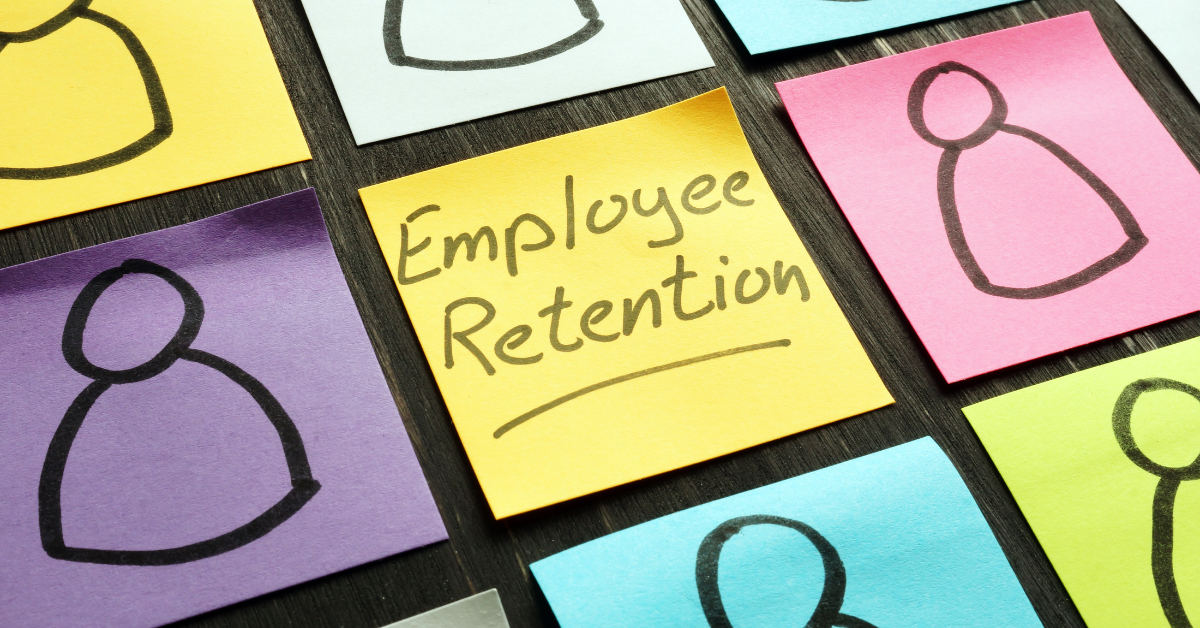Posted on October 31st, 2025

The technology sector has always been defined by its relentless pace of change and its constant quest for top-tier talent. As the Great Resignation transitions into the Great Re-evaluation, tech leaders are now rethinking their internal cultures, management practices, and long-term workforce strategies.
The modern workforce—especially in tech—is no longer motivated by salary alone. Today’s engineers, developers, and data scientists seek purpose, growth, flexibility, and a culture that aligns with their values. This evolution means companies can no longer rely on traditional perks or one-size-fits-all engagement tactics. They must design employee retention strategies that speak to the real priorities of a skilled, global, and mobile workforce.
The cost of replacing a highly skilled tech professional—whether a software engineer, data scientist, or cloud architect—can exceed 150% of their annual salary. But the true loss extends beyond numbers: every departure drains institutional knowledge, slows innovation, and disrupts team momentum.
In 2025, the challenge is no longer just attracting talent but sustaining it. High turnover rates can derail project timelines, affect client satisfaction, and weaken organizational culture. That’s why effective employee engagement and retention strategies have become a business-critical priority for tech firms aiming to stay competitive.
To understand how to build a data-driven, future-ready retention framework, explore this comprehensive guide on employee retention strategies from W3Global—it dives deeper into proven approaches designed for today’s fast-paced technology landscape.
In the tech industry, skills become obsolete faster than in almost any other field. The primary reason many professionals leave isn’t dissatisfaction with their role—it’s the perception that their current position limits career progression. As such, one of the most impactful employee retention strategies for 2025 revolves around redefining career development from a rigid ladder into a flexible, personalized lattice.
Tech companies must invest in internal mobility programs and continuous learning platforms. Personalized growth paths—supported by AI-driven skills gap analysis—should help employees move fluidly across projects and departments. Offering “career sprints,” or short-term cross-functional projects, gives workers exposure to new technologies and challenges without requiring a permanent role change.
These agile, project-based experiences simulate the excitement of a new job while keeping employees engaged within the same company. Among all strategies for employee retention, this one directly addresses a tech professional’s desire for novelty and growth.
Additionally, managers must evolve from supervisors into “career coaches.” Their ability to facilitate internal mobility and discuss future pathways should be a measurable component of their performance. For ambitious engineers and developers, visible opportunities for career evolution often outweigh marginal salary hikes—making career agility one of the best employee retention strategies available.
Compensation will always be a pillar of effective employee retention strategies, but 2025 marks a shift toward transparency and personalization. Modern tech employees demand pay structures that are both fair and flexible.
In the past, secrecy around pay scales often fueled distrust and turnover. Today, forward-thinking companies implement transparent pay bands for every role and clearly communicate how compensation decisions are made. This honesty fosters fairness and loyalty, key elements of sustainable employee engagement and retention strategies.
The next generation of “total rewards” extends far beyond base pay and stock options. The best strategies for employee retention include individualized benefit programs that reflect diverse life stages and personal goals. For example:
Some organizations even offer “flex points” systems, where employees can allocate a benefit budget toward perks they value most—from mental health support to tech allowances. These personalized total rewards send a powerful message: we see you as an individual, not just an employee.
When executed well, these compensation-focused employee retention strategies turn jobs into long-term partnerships and reinforce trust at every level of the organization.
Culture is the invisible infrastructure that holds all employee engagement and retention strategies together. With remote and hybrid work now permanent fixtures in tech, fostering a culture rooted in trust, inclusion, and flexibility has become essential.
Gone are the days when productivity was equated with physical presence. The best employee retention strategies in the hybrid era prioritize “deliverables over presence.” Success should be measured by outcomes, not office attendance.
To achieve this, tech leaders must embrace asynchronous collaboration tools—ranging from robust documentation systems to project management platforms and video updates. These tools allow global teams to work efficiently across time zones while respecting personal boundaries.
In-person offices, when used, should serve as collaboration hubs rather than traditional workspaces—places designed for brainstorming, innovation sessions, and social connection.
Perhaps the most crucial of all cultural strategies for employee retention is maintaining location-agnostic parity. Every employee, regardless of where they work, must have equal access to growth opportunities, recognition, and resources. Without this balance, hybrid organizations risk creating a two-tier system that erodes morale.
Above all, building psychological safety—where engineers and designers feel comfortable taking risks or voicing concerns without fear—is what transforms culture into one of the best employee retention strategies for the modern workplace.
Data has revolutionized every corner of the tech world—so why not HR? The most advanced employee retention strategies in 2025 are predictive, not reactive. Rather than waiting for resignations, companies now deploy analytics to anticipate attrition and intervene early.
Predictive attrition models analyze behavioral and engagement data to identify employees who may be at risk of leaving. Metrics might include reduced participation in meetings, fewer logins to internal learning platforms, sentiment from surveys, or even decreased communication with managers.
When patterns emerge, the system triggers a proactive response: a stay interview, career check-in, or tailored development opportunity. This isn’t surveillance—it’s support. It allows leaders to address issues before they escalate into exits.
These predictive, data-informed employee engagement and retention strategies move HR from an administrative function to a strategic business partner. They enable organizations to safeguard institutional knowledge, reduce turnover costs, and enhance workforce stability.
The companies that master predictive retention will have a significant edge—not because they can stop all resignations, but because they can understand and respond to employee needs faster than competitors. This data-driven precision cements predictive analytics as one of the best employee retention strategies for the future of tech.
In 2025, employee retention strategies are no longer isolated HR programs—they’re a core business strategy tied to growth, innovation, and brand reputation. The most successful tech companies integrate all the above elements—career agility, personalized rewards, culture, and predictive analytics—into a cohesive, evolving framework.
A fragmented or inconsistent approach will no longer suffice. The talent market is simply too competitive, and skilled professionals have more options than ever before. To succeed, companies must transform their strategies for employee retention from reactive fixes into dynamic, data-driven ecosystems that evolve with their people.
Building effective employee engagement and retention strategies takes more than good intentions—it demands expertise, analytics, and insight into global workforce trends. That’s where W3Global comes in.
Are your current employee retention strategies keeping pace with the demands of 2025? Don’t risk losing your most valuable people to competitors. Partner with W3Global to implement customized, predictive, and scalable solutions that help you retain, engage, and empower your workforce.
Secure your talent. Strengthen your culture. Future-proof your success!
 The Most Effective Employee Retention Strategies for Tech Companies in 2025
The Most Effective Employee Retention Strategies for Tech Companies in 2025 What is the Importance of Conducting a Skills Gap Analysis
What is the Importance of Conducting a Skills Gap Analysis 10 Best Time Management Interview Questions for Remote and Hybrid Roles
10 Best Time Management Interview Questions for Remote and Hybrid Roles How AI Is Transforming the Staffing Industry in 2025
How AI Is Transforming the Staffing Industry in 2025 The Real Hiring Problems No One Talks About — And How to Solve Them
The Real Hiring Problems No One Talks About — And How to Solve Them Top Hiring Trends to Watch in 2025: What Employers Need to Know
Top Hiring Trends to Watch in 2025: What Employers Need to Know 10 Data‑Driven Strategies to Combat Employee Attrition in 2025
10 Data‑Driven Strategies to Combat Employee Attrition in 2025 Reignite Your Spark: Reclaiming Joy and Authenticity at Work in the Age of Work-Life Integration
Reignite Your Spark: Reclaiming Joy and Authenticity at Work in the Age of Work-Life Integration Launching Your Career from Anywhere: A Guide to Thriving in the World of Remote Entry-Level Jobs
Launching Your Career from Anywhere: A Guide to Thriving in the World of Remote Entry-Level Jobs Top 20 Popular Behavioral Interview Questions and How to Answer Them in 2025
Top 20 Popular Behavioral Interview Questions and How to Answer Them in 2025 How to Avoid Employee Burnout: 10 Proven Strategies for a Healthier Workplace
How to Avoid Employee Burnout: 10 Proven Strategies for a Healthier Workplace 10 Unique Interview Questions to Ask Candidates for Better Insights
10 Unique Interview Questions to Ask Candidates for Better Insights How to Craft the Perfect Resume: What a Proper Resume Looks Like in 2025
How to Craft the Perfect Resume: What a Proper Resume Looks Like in 2025 10 Steps to Build an Effective Career Development Plan for Long-Term Success
10 Steps to Build an Effective Career Development Plan for Long-Term Success